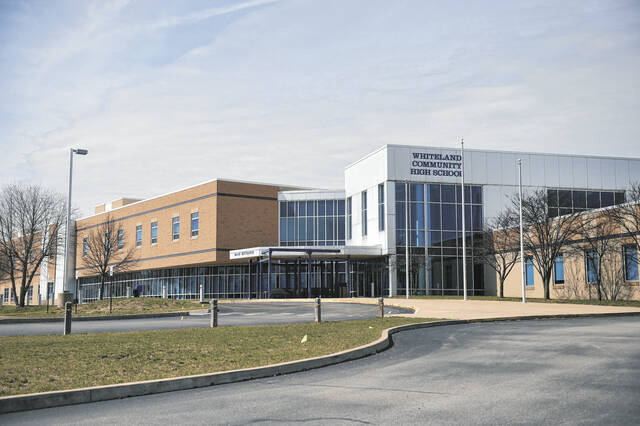Students in a new aerospace class at Whiteland Community High School are building rockets and designing flight paths.
During the program’s first year, it has just six students, but $10,000 in new grant money the Clark-Pleasant Education Foundation received from the Elba L. and Gene Portteus Branigin Foundation will help the program with much needed materials, such as Glowforge lasers for precision cutting, which can be used to cut fins at the bottom of rockets. The grant will also pay for structural stress analyzers, used for testing force on materials, said Stephanie Wicke, the high school’s math and engineering teacher.
The class is part of Project Lead the Way, a sequence of classes that helps students who are interested in a specific area of study fulfill that interest as they prepare for college. In the case of aerospace, the class serves as the third and final year of an engineering Project Lead the Way track that begins with Introduction to Engineering Design and continues with Principles of Engineering.
The new supplies will enhance the experience of the class. As more students hear about it, they too will be interested and the program will grow, Wicke said.
“The first two courses (in engineering) are intro courses and they don’t go into depth with anything, but it’s the first time they get to explore multiple areas of engineering. There’s no other class where you get to build and launch a rocket. They’ve been asking me since Day 1 ‘when will we get to the rockets?’” she said.
That day will come toward the end of the school year, Wicke said.
But the aerospace class is engaging even when students aren’t building rockets, she said.
“We talk about outer space and space travel and look at the problem of space junk and how to remove some of it so it’s not as much of an issue for new satellites and spacecraft. (We also talk about) how to keep them in orbit,” Wicke said. “We talk a lot about orbital mechanics, and now that we’ve talked about how to get into space that’s close to Earth, how do we explore the rest of space into the further reaches?”
Elliott Spangler, a junior, was inspired by the class to pursue engineering in college, he said.
“We do a lot of very challenging and fun projects that excite me about my possibilities in the future,” Spangler said. “I am definitely very thankful to be able to take a course like this, where I can learn a lot, have some fun and have a great course for my transcript.”
The education foundation will next focus on grants for fine arts and special education classes. The hope is, with more well-funded options for students, they’ll be able to explore and hopefully discover new interests, said Jenny Zahm, the foundation’s interim executive director.
“Besides college credits, it’s having more exposure to different types of classes,” Zahm said. “If you don’t have exposure, how do you know if you’d be interested in that field? Kids have to be exposed to it first before they make those types of decisions. The more exposure, the better chance they have of finding something that’s right for them.”





